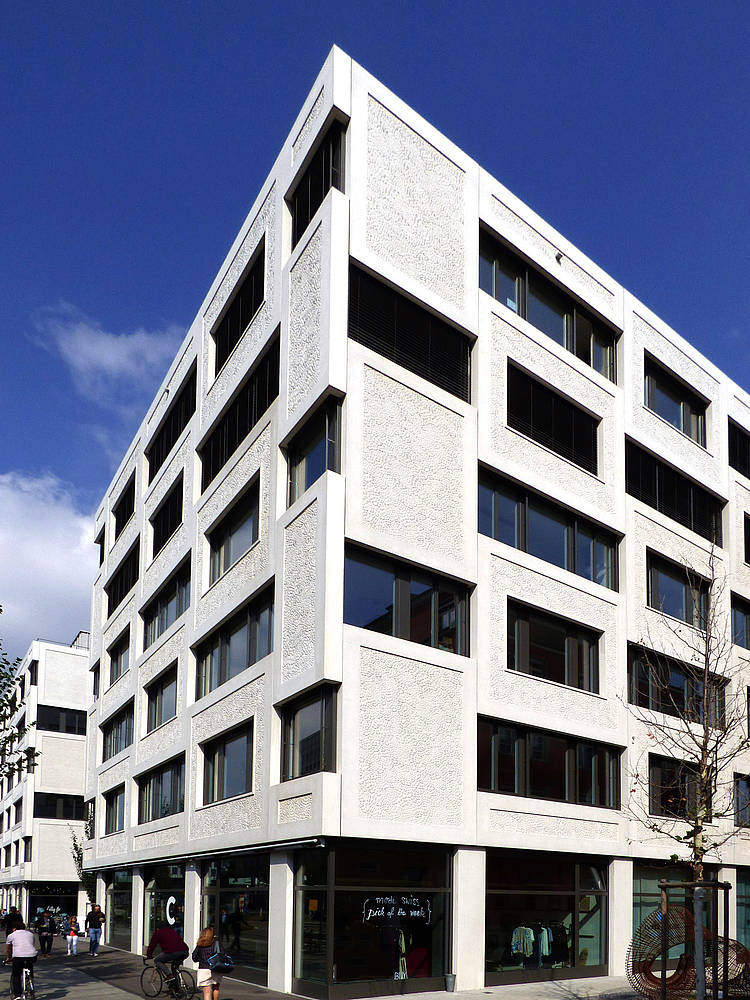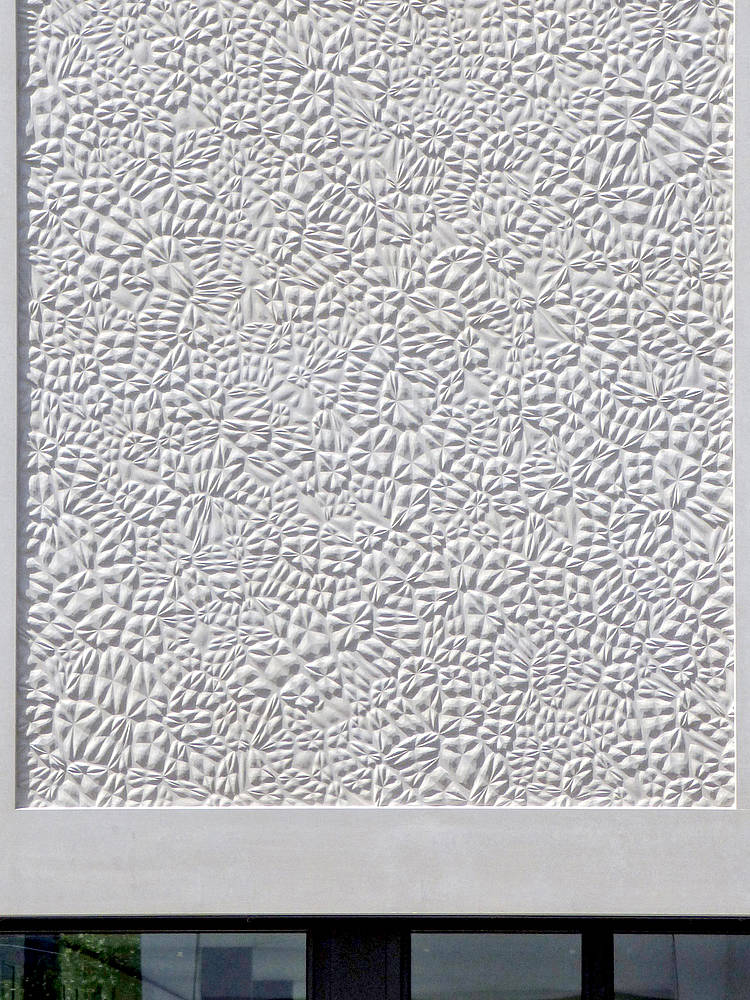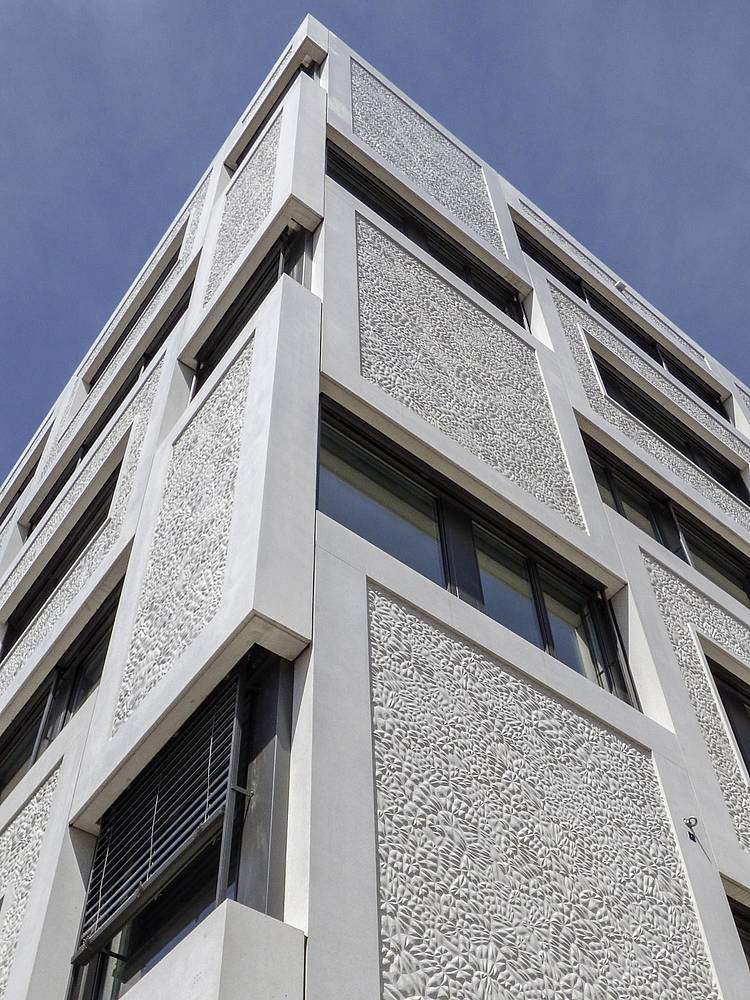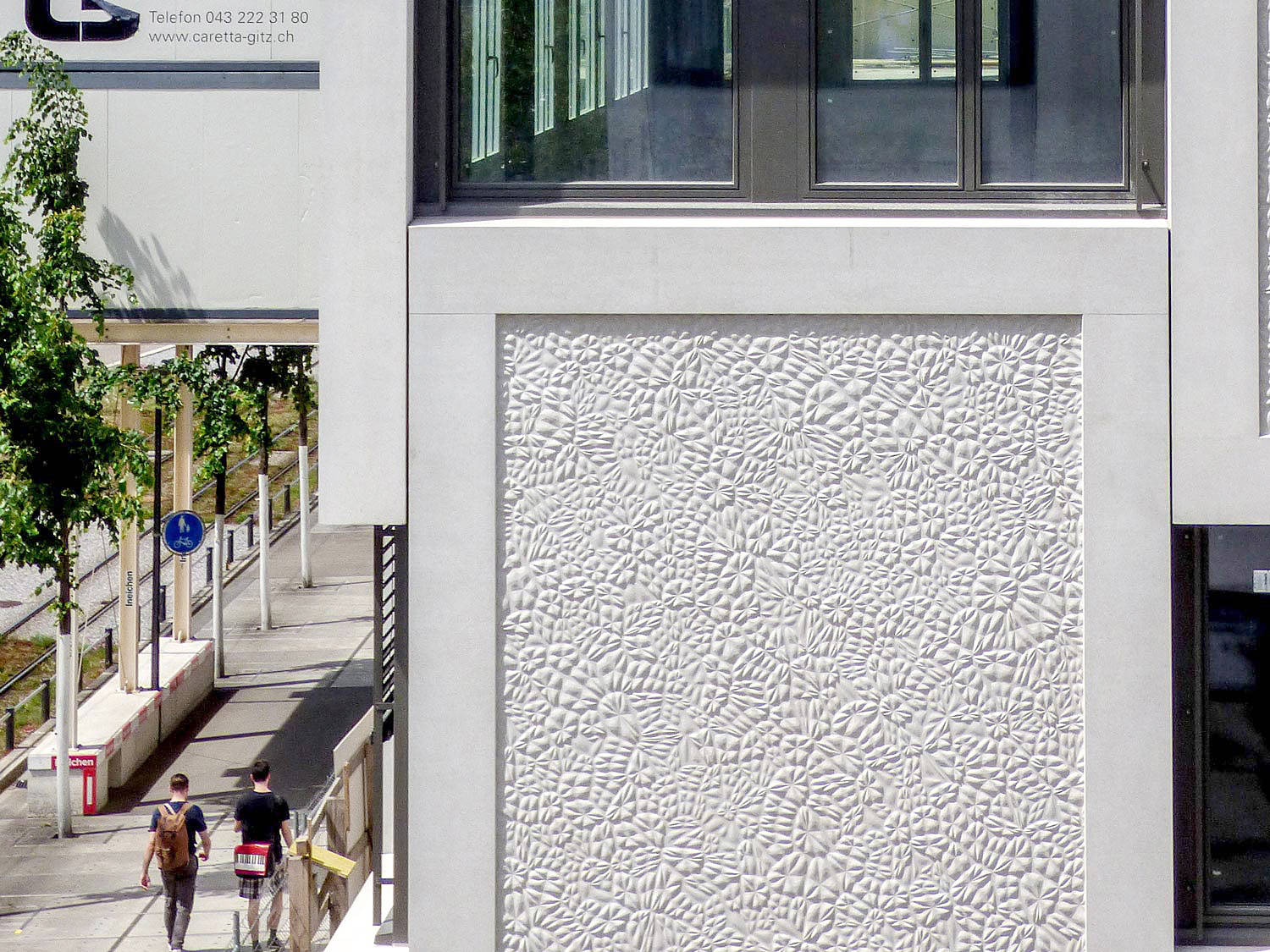Forum Z, Zurich, Switzerland
Tackling anonymity and boredom with unique design: when designing the Forum Z office building, the architects strived to create a unique, inspiring façade. Custom formliners embossed a special texture into the concrete.
Attractive workplaces inspire creativity. Set in the Swiss capital, Forum Z makes a statement with its exterior. pool architects opted for a unique façade design to make a clear statement against drab office buildings.

The project is part of the Zurich-West culture park, which focuses on intercultural, sustainable living and working. Modern working and living meet free space for creativity and dialogue. The clients wanted to develop socially responsible architecture that facilitates a varied range of benefits.
The 4,650 square meters of office space in Forum Z is rented to non-profits in the fields of education, social care, culture and the environment. The stairwell and facility management are both located in the center, circled by the offices. These can be divided to reflect the tenants’ changing needs for space.

For the façade design, pool architects turned to web designer Hanna Züllig. The planners asked her for a unique design for the building’s outer skin. “The aim was to create an architectural connection between the passers by on the street and the neighborhood as a whole,’ said Züllig.
She was inspired by organic structures such as limestone and techniques such as stone cutting. She used computer programs to create a unique texture, the design of which has a nautical feel, that can be grouped to create floral formations. “The design creates a visual language that translates shapes and figures between the digital and analogue worlds,” says the web designer. But it still gives the viewer scope for interpretation and imagination. The architects are impressed by the results: “Arranged in a honeycomb shape, the prefabricated concrete elements of the façade and their eye-catching vitality represent the institution and the varied nature of its tenants.”

Züllig’s unique design served as the template for the formliners used to produce the concrete elements. The digital texture file was transferred to boarding to serve as a positive model for the form. Based on this, the elastic formliner was then used in the concrete prefabrication facility to produce the façade elements. “The mineral print on the concrete surfaces makes a robust presence in the heterogenous, often anonymous world of business,” said the architects.
